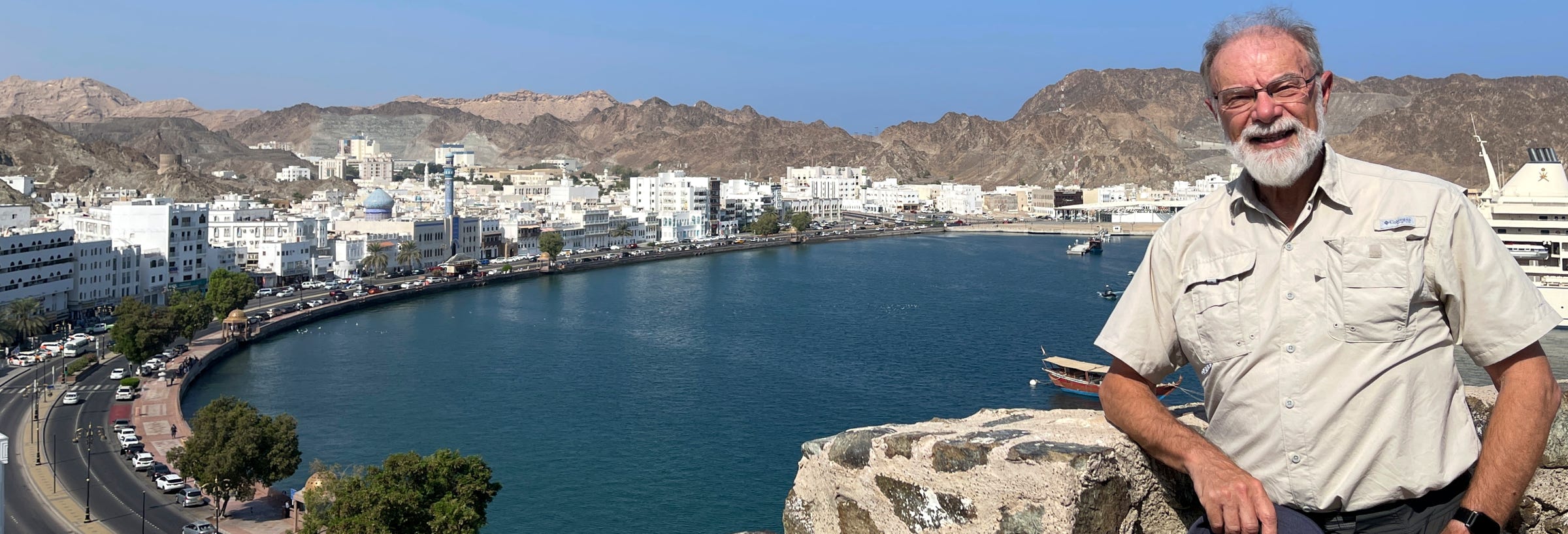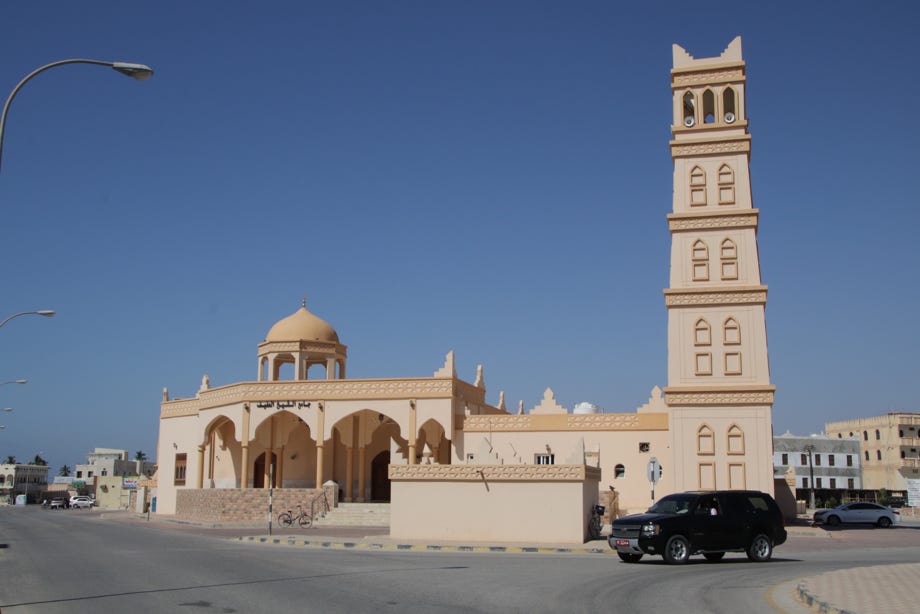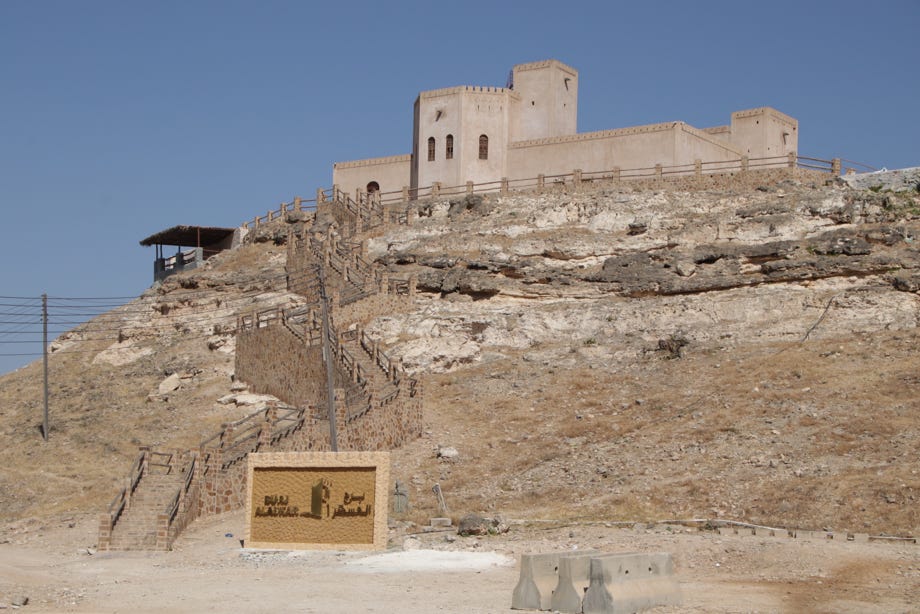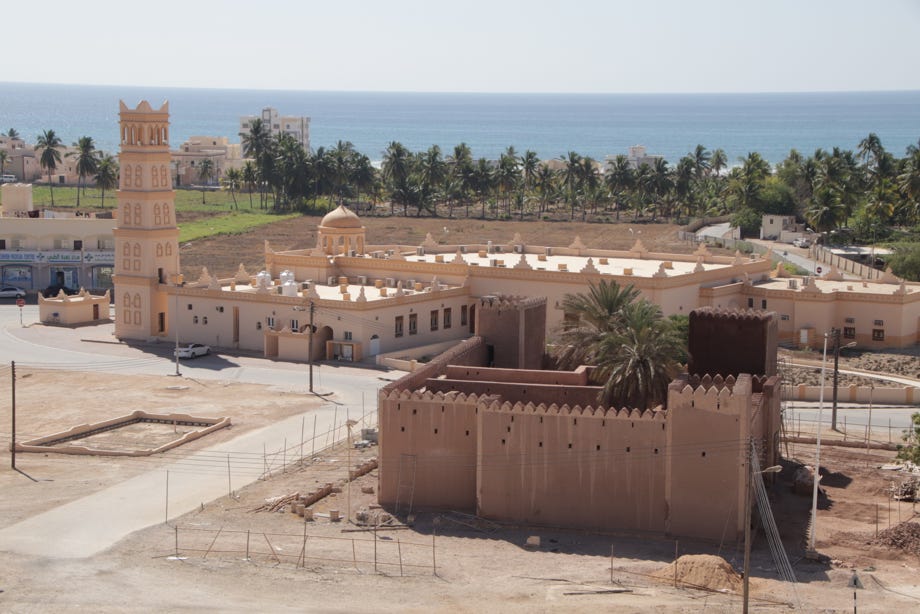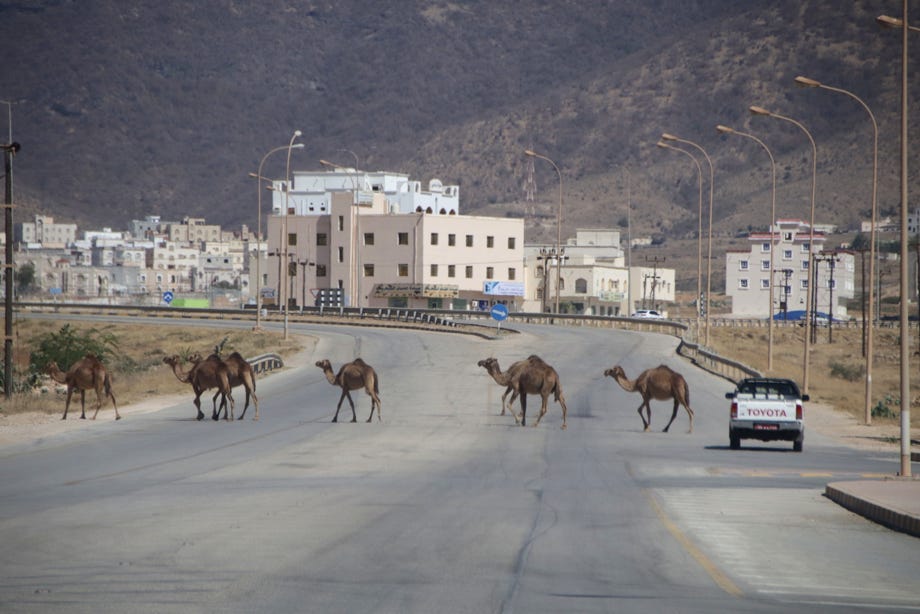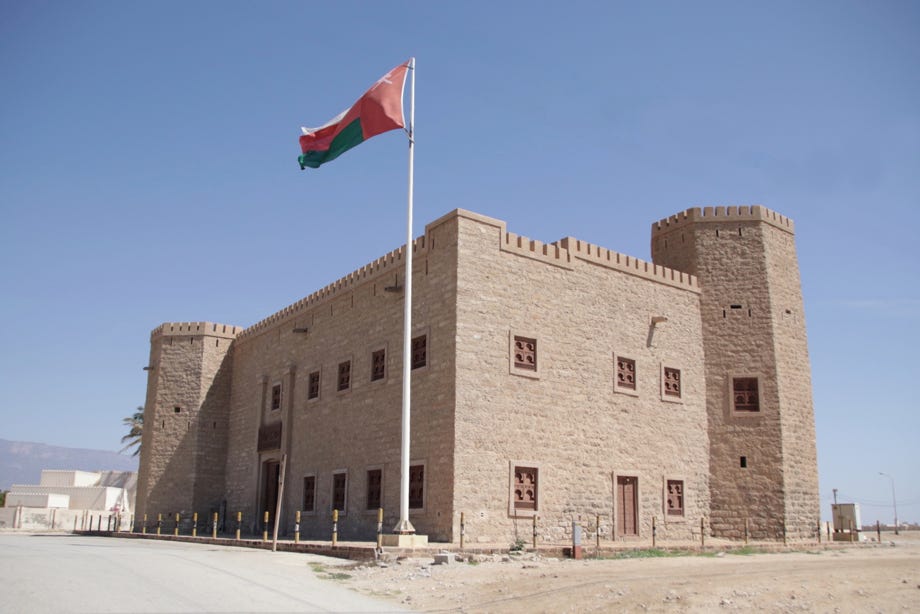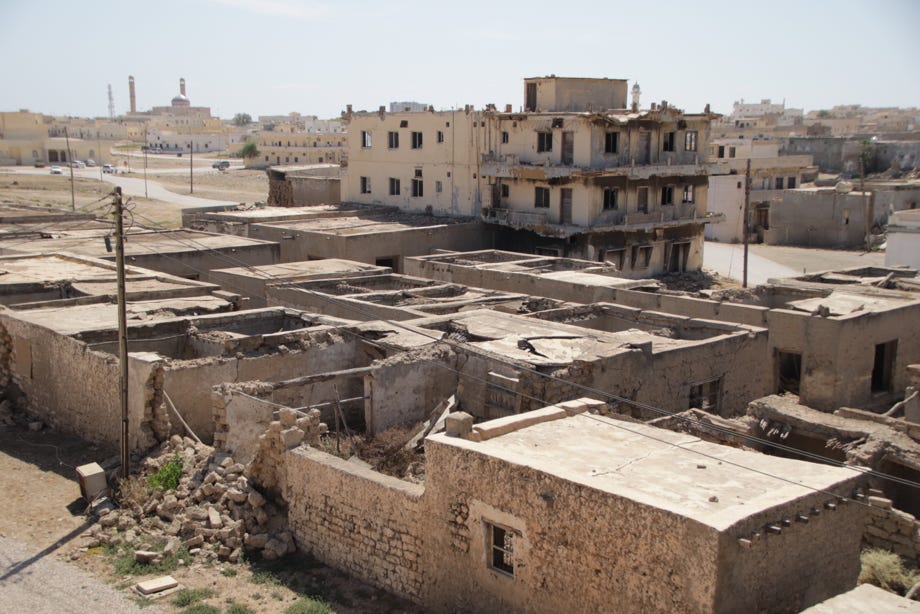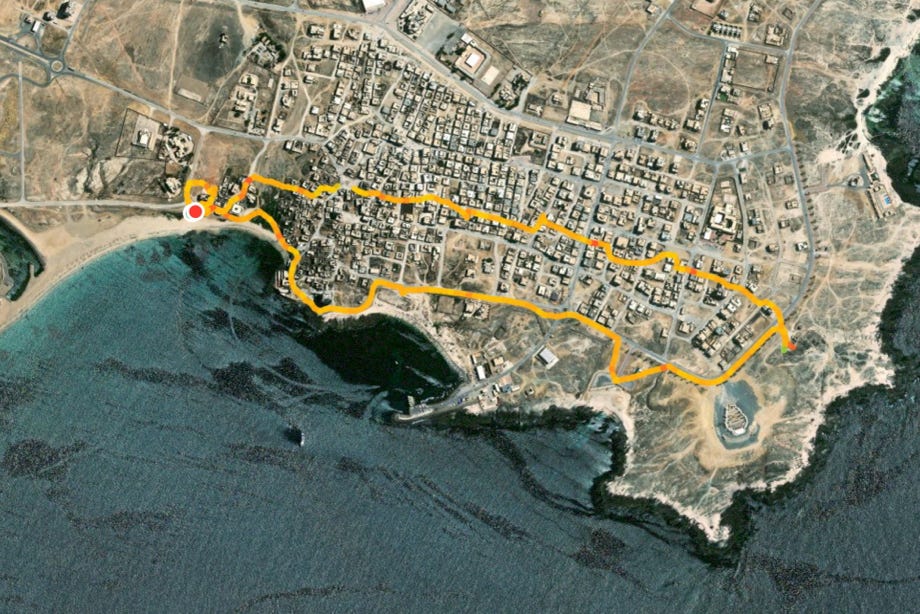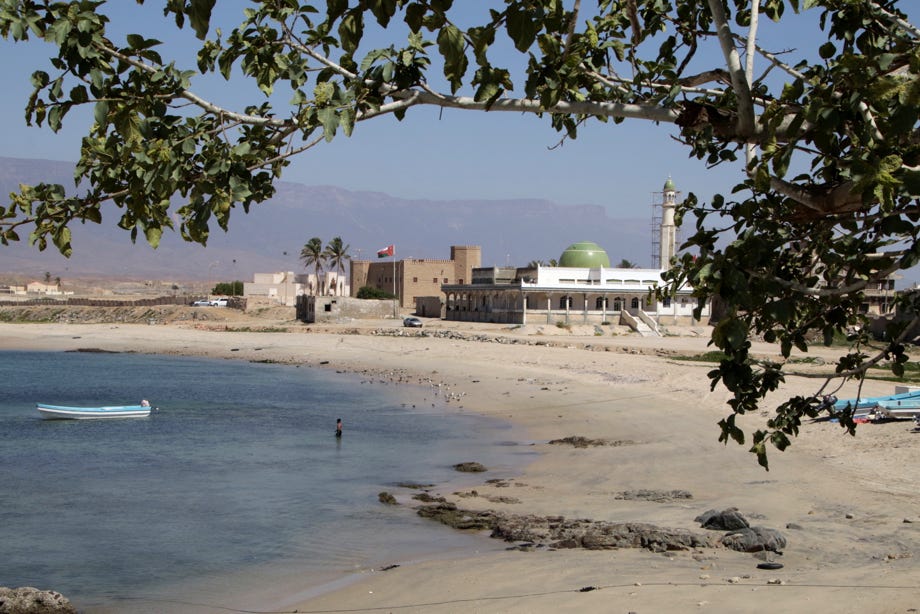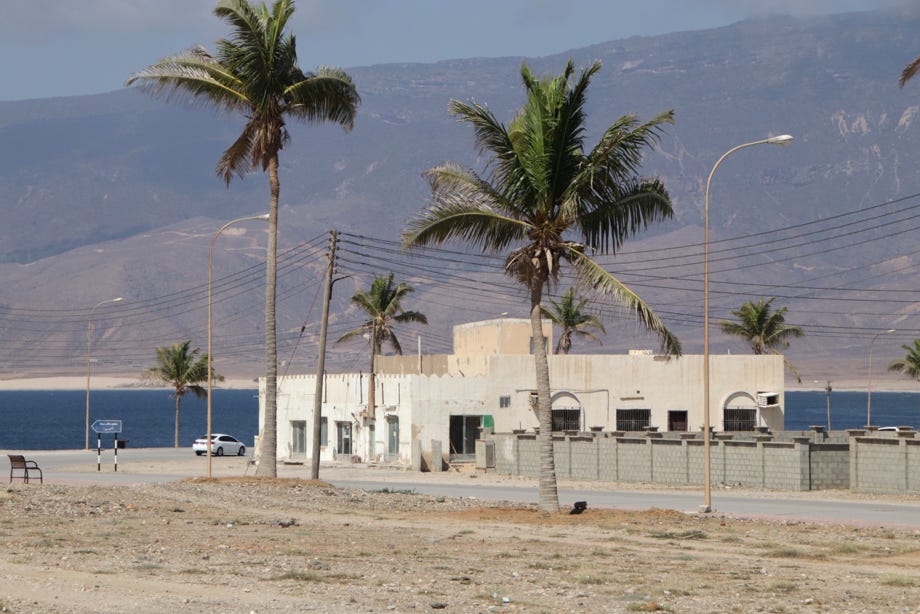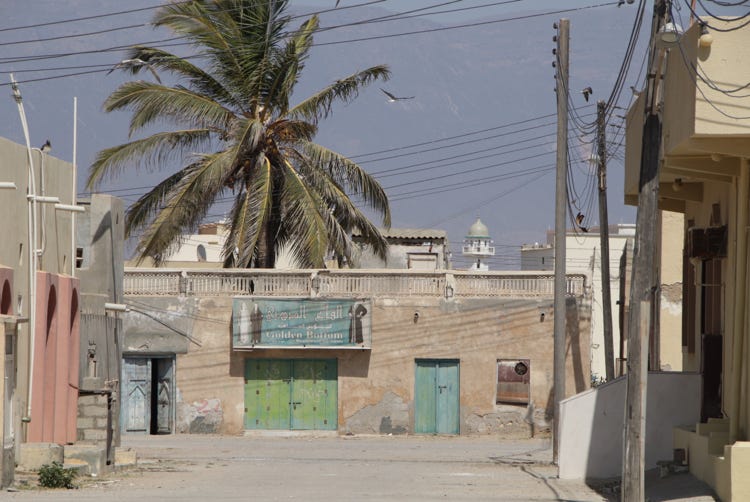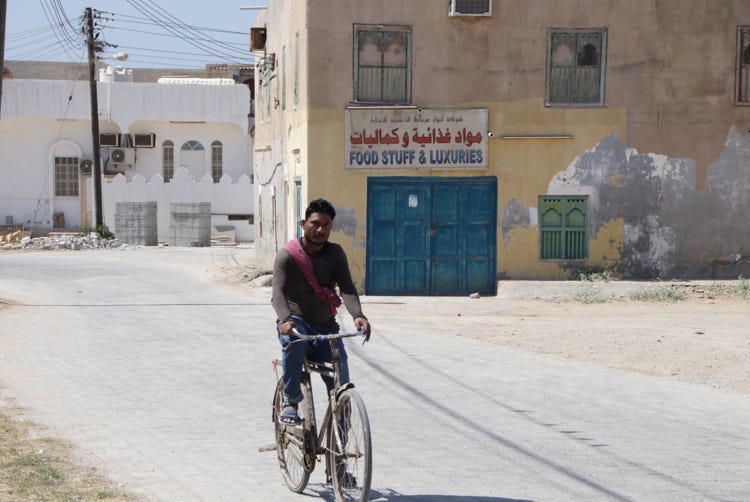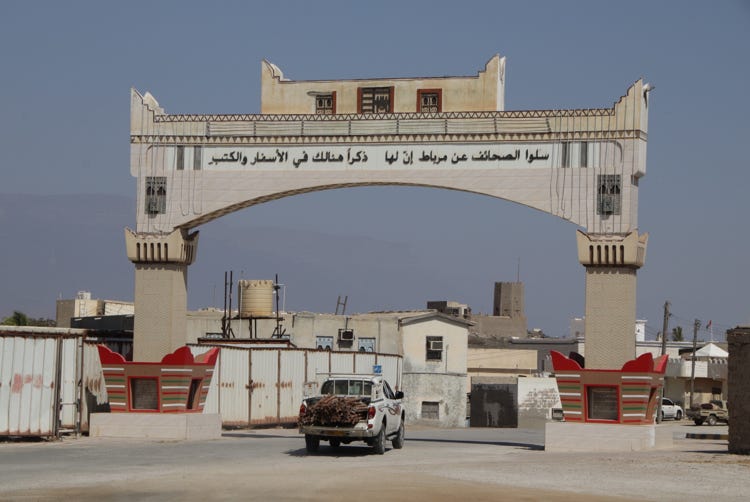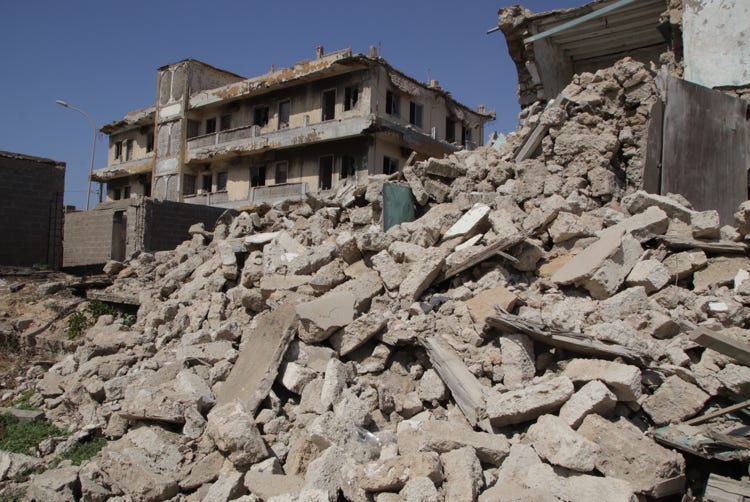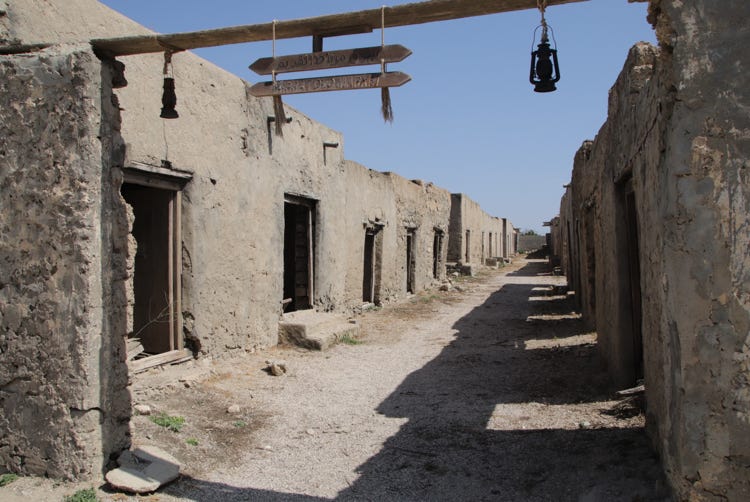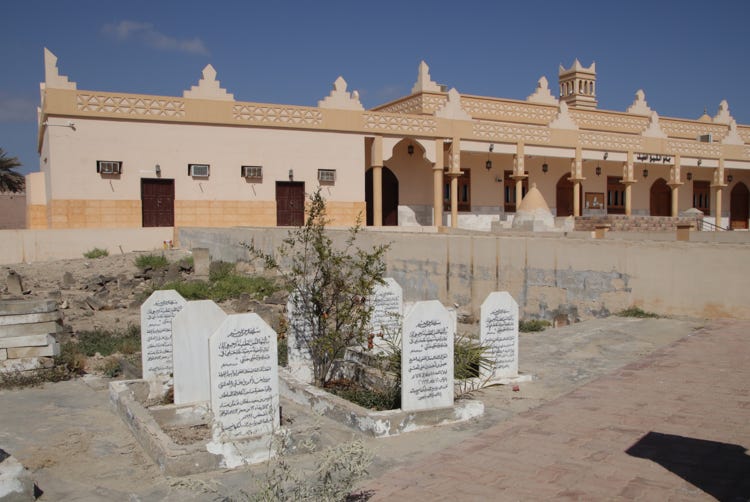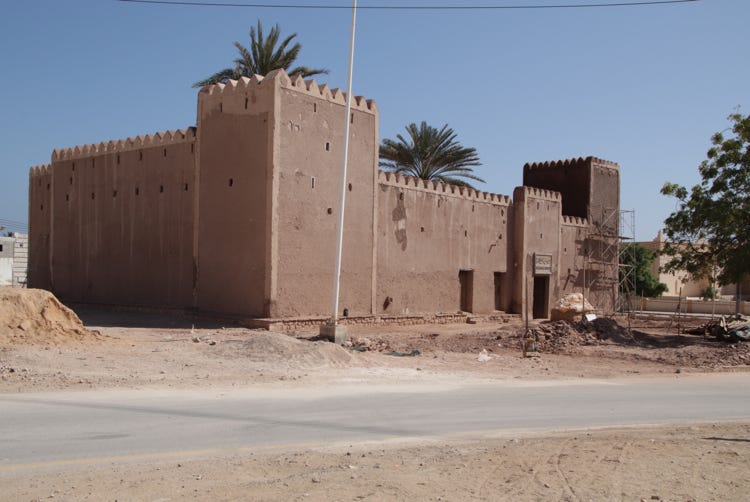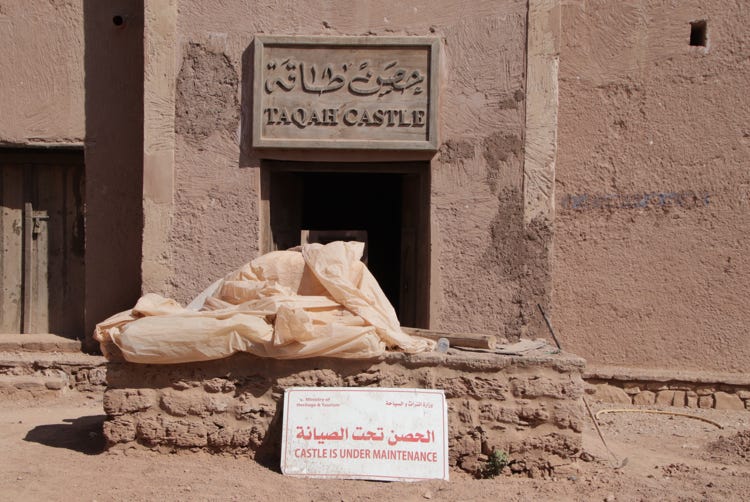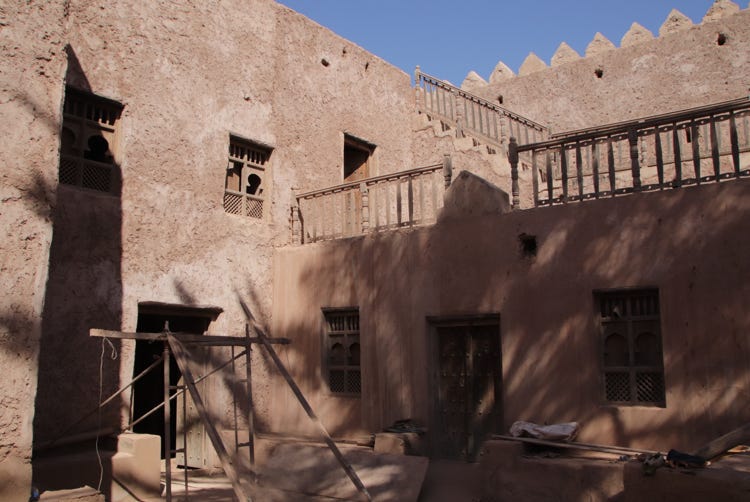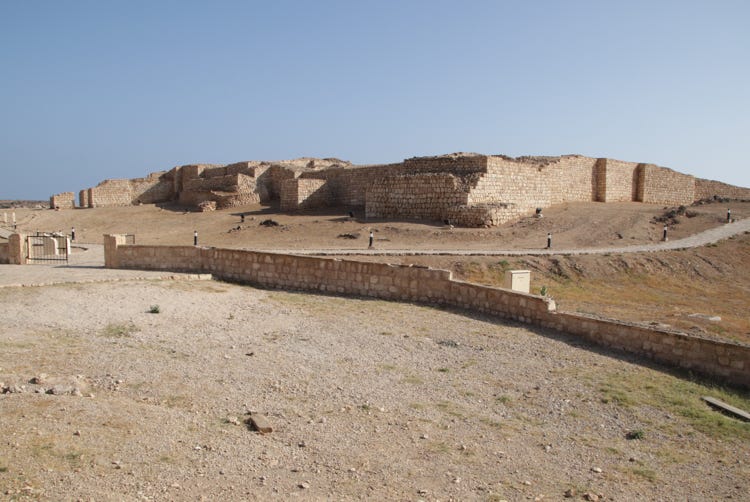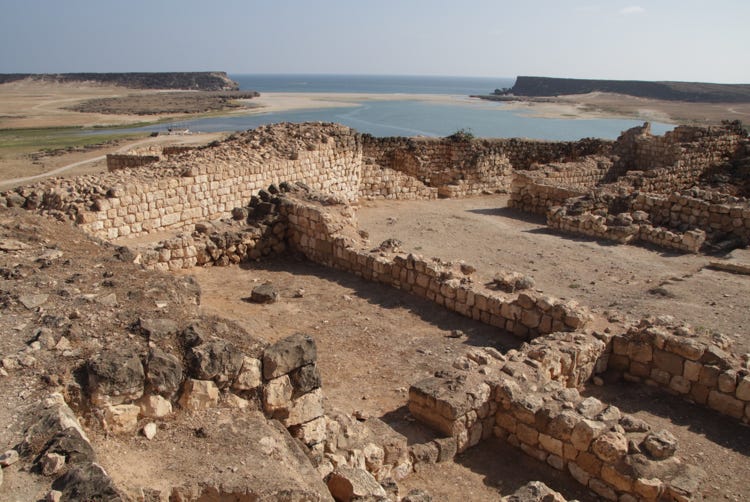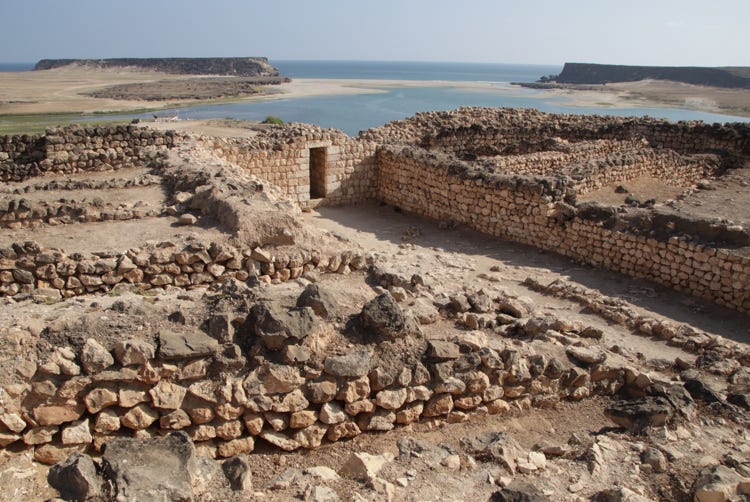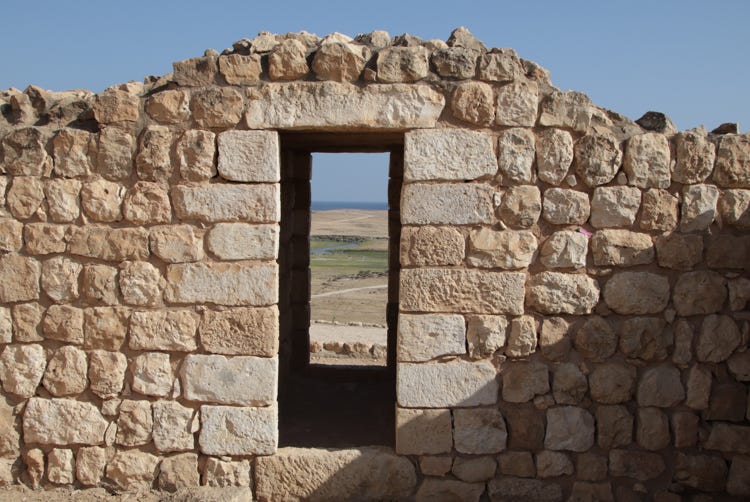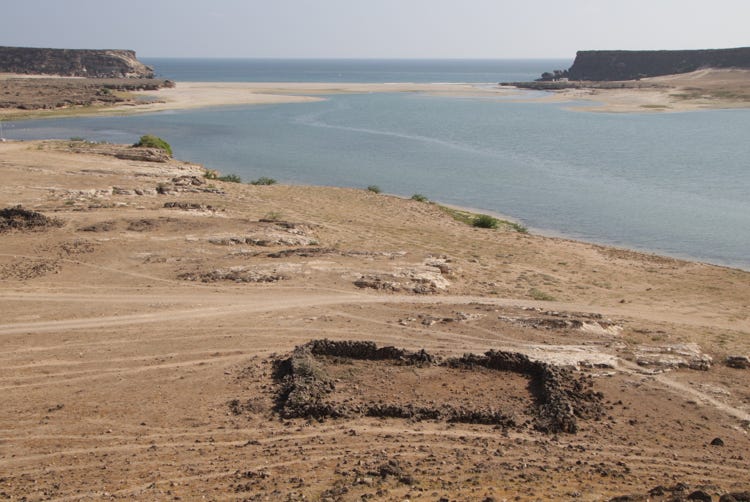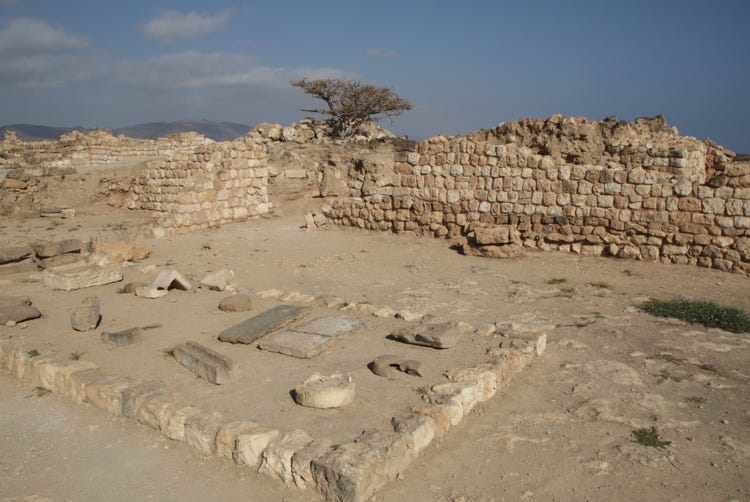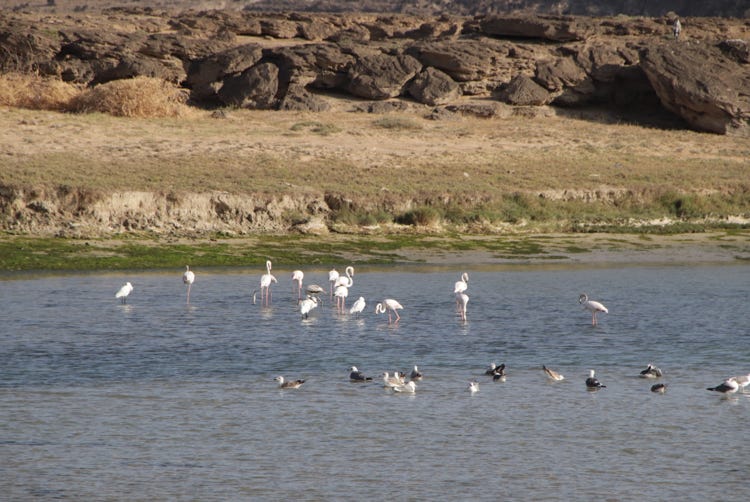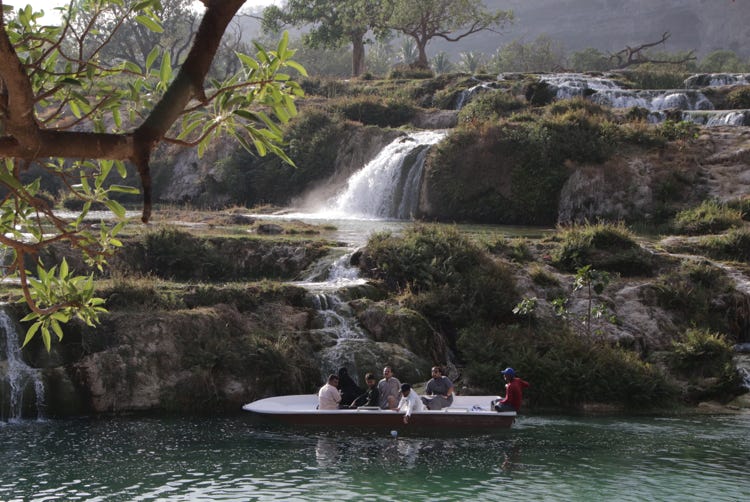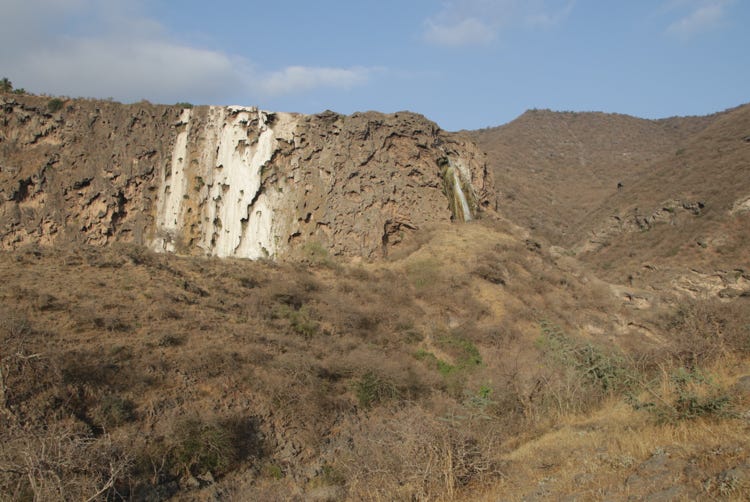Saturday is the second day of the weekend in Oman. Although not as many places are closed as on Fridays, those that open on Saturdays operate on shorter hours than they do on weekdays (Sundays to Thursday). My itinerary today was therefore influenced by the need to ‘chase’ opening hours.
I had to spend a couple of hours this morning on work-related matters and so I didn’t leave the hotel until 10:20am. Fortunately, my destinations today didn’t involve long distances, and the roads were invariably excellent making driving quick and comfortable.
My first stop this morning was the town of Taqah, 29 kilometres east from my hotel in Salalah. There were three interesting places to see in this small town. The first was impossible to miss as I drove into the town because of its large size, orange colour and location right beside the main road. The Afif Mosque was originally built over 400 years ago, but the current building dates from much more recent times, 2019 to be precise. The antiquity of the mosque was evident, however, in the large cemetery in the grounds nearby, and some especially important graves in its immediate vicinity – including (according to Google Translate’s interpretation of one of the headstones) the mother of Sultan Qaboos bin Said, Oman’s highly regarded ruler from 1970 to 2020.
Just behind the Afif Mosque was the second place I was interested to see, Taqah Castle. However, I could only have a look at the castle’s exterior as it was closed for extensive renovation.
The third destination was Taqah Fort (also known as Burj Alaskar), located on a hill a few hundred metres north from the Castle and Mosque. Access to the Fort was via a climb up over a hundred steep steps, but the views across the Castle, the Mosque and the small town of Taqah made the climb well worth the effort. According to several online sources, the Castle was supposed to open at 9:00am, but the doors were very firmly locked with a huge padlock and there were no signs of anyone intending to change that situation.
Therefore, having spent less time in Taqah than I had planned, I proceeded to my second destination, the town of Mirbat a further 38 kilometres to the east. The star attraction in Mirbat is near its northern edge, Mirbat Fortified Castle. This very well-preserved structure was open, and moreover entry was free. Every room featured a very well-presented information display showing both the history of Mirbat and the physical and cultural characteristics of the wider region.
As expected, the views from the top of the Castle were also impressive, although they also revealed the extent of the town’s apparent decay. Almost every building except the mosque within half a kilometre to the south had been abandoned and was in a serious state of decay and disintegration. I haven’t been able to find out the reason. I know there was an attack by Communist guerrillas in Mirbat in 1972 (the Battle of Mirbat), and much of the damage does seem like the aftermath of a war, but the desolation seems far more recent than 1972.
The next place I wanted to visit wasn’t due to open until 2:00pm, so I decided to take a walk around Mirbat and soak up the atmosphere. Strangely perhaps, I found the decaying northern part of the town to be the most interesting – in a post-apocalyptic sort of way. The walk grew to five kilometres because I was enjoying it so much, and the route is shown in one of the images. The town wasn’t spectacular, but it was relaxed, calm, quiet, welcoming and colourful – and the fresh sea breeze made the warm temperature (26°C) very pleasant.
My 2:00pm destination was Khor Rori, back to the east towards Taqah. However, the online information seemed to be wrong; a small sign at the entry gate stated that the opening time would be 3:00pm today. With an hour to spare, I decided to re-visit Taqah (which was only 8 kilometres to the west) and see whether Taqah Fort had opened.
It hadn’t, but the afternoon lighting was better than the morning light I had experienced in the morning, so I had another walk around and took more photos. Although the workers were (kind of) busy with the renovations of Taqah Castle, they didn’t seem to mind me walking in and getting some photos, which I appreciated. It was soon time to return to Khor Rori, and I arrived at the entry gate right at 3:00pm, joining several German tourists who were also keen to enter. The ticket seller arrived at 3:10, and after cranking up his credit card reader proceeded to collect our 3 rials entry fee (no cash permitted) and open up the gate.
Khor Rori was once an estuary housing Sumhuram, one of Oman’s most significant ancient ports. Today, Sumhuram is in ruins, and the estuary has become a lagoon as a sand bar has blocked the surface flow of water in both directions. Since 2000 it has been a UNESCO World Heritage site.
Sumhuram was founded in the 3rd century BC, but was abandoned in the 5th century AD, almost certainly because the sand bar blocked the estuary to trading vessels. During the 800 years that it thrived, it was a small but prosperous walled city that flourished by a combination of fishing and trade, mainly based on frankincense.
There was very little signage in the ruins of Sumhuram. I saw one sign identifying the “temple”, one pointing to “residential area” and one pointing to “stores”. No detail or explanation was offered. However, this information deficit was overcome when I had finished exploring the ruins and drove about half a kilometre downhill to the small museum. Although its physical display was somewhat sparse, they had a seven-minute video that was particularly well made, clear and explanatory. Perhaps they could suggest that visitors go to the Museum first and then back-track to the ruins.
Khor Rori has a second function beyond simply being the site of Sumhuram. It is a designated wildlife reserve and an important breeding ground for birds. The main wildlife zone is near the lagoon behind the sand bar, so I headed there after I had finished at the Museum. It was a truly beautiful location with a wide range of water-loving birds (most of which I couldn’t identify, not being a “bird man”), including flamingos (which I could identify).
Although the sun was getting low in the sky by the time I left Khor Rori, I was interested in making one last stop on the way back to Salalah. The source of the water feeding the lagoon at Khor Rori is Wadi Darbat. A few kilometres upstream from Khor Rori is a series of waterfalls that are apparently spectacular in the wet season. The long limestone cliff that forms the main waterfall was easily visible, and it was good to see a token waterfall at the far eastern end of the cliff. Further inland were several smaller examples known as the Darbat Step Waterfalls. I imagine that the Darbat Waterfalls would be an amazing sight in the wet season, but they were still worth a quick visit this afternoon albeit in fading light.
Half an hour later I had arrived back at my hotel feeling quite happy with the somewhat diverse experiences of the day.
